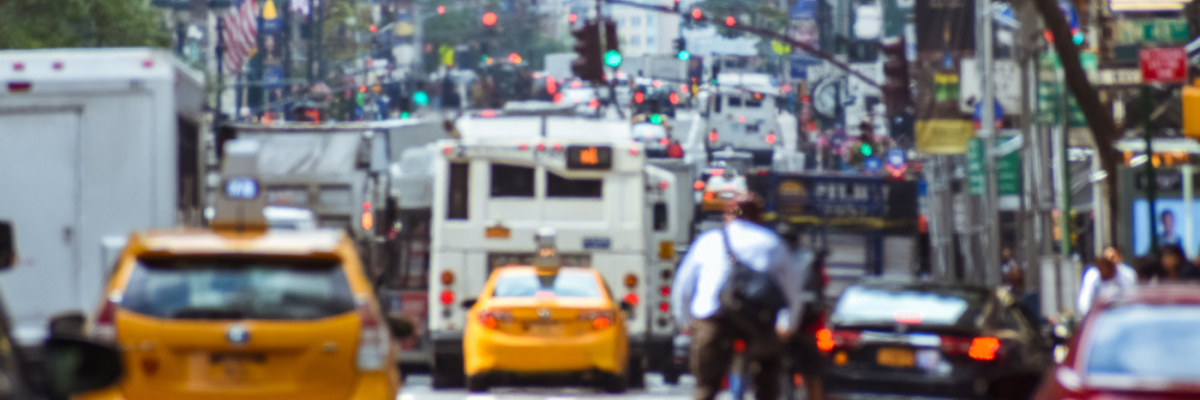Service technicians in the HVAC and Refrigeration industry spend a considerable amount of time driving (in the New York City metro area, that’s an understatement). For business owners, all that time spent behind the wheel represents not only a major expense but also a big risk.
In this article, we will review why employers should never assume their workers know how to drive safely. And, we will share some safe driving practices that can help technicians to improve their city driving skills and help employers to reduce the risks to the company from driving-related incidents.
Why safe driving practices are so important for service technicians
It’s tempting to assume that a technician who has a valid driver’s license knows safe driving practices and will do their best to protect the company’s property and reputation. For a business owner, that can be a dangerous assumption.
For one thing, driving in NYC is nothing like driving in the suburbs where a technician may have learned. The rules and expectations are different, traffic can be exponentially different, and there are many more obstacles to pay attention to.
Also, driving a commercial vehicle comes with more risks and responsibilities than driving a personal one. Always remember that a company truck or van is basically a moving billboard for the business.
An inexperienced city driver can easily end up getting ticketed, getting into accidents, and causing complaints that can hurt the company’s reputation. Vehicle damage and insurance claims (not to mention rising insurance rates) can take a big bite out of profits.
That’s why it pays to make sure everyone who drives a company vehicle understands safe driving practices for driving in NYC. New city drivers can benefit from some time driving with a more experienced driver.
Here are some valuable tips.
Top 5 safe driving practices for driving in NYC
1. Be on high alert (but stay cool)
When driving in NYC, there’s so much going on around you that you must be hyper-alert to drive safely. This isn’t the time to be thinking about what to have for dinner. Even with hands-free devices, phone calls are not a good idea. You need all your wits about you, and all your attention on your surroundings.
Here are just a few of the obstacles you must be aware of at all times:
- People walking and texting
- Aggressive drivers
- Bicycles, scooters, skaters (in bike lanes or not)
- People walking with dogs and small children
- Pedestrians wearing headphones (who may not hear you behind them)
- Construction workers and scaffolding
- Vehicles that stop frequently or suddenly, including taxis, buses, sanitation trucks, and emergency vehicles
- Potholes (which can be more like gaping chasms in the road)
“Pay attention” may sound like obvious advice. But for many new city drivers, it takes dedicated practice to tune out distractions while driving in NYC.
You also don’t want to go to the other extreme and get overly anxious about driving.
What you want to do is get into a calm and focused state where you can anticipate potential trouble and make good driving decisions.
2. Plan ahead
Even when using GPS (some would say especially when using GPS), accidents happen when you’re trying to figure out directions while driving. The fact is, GPS isn’t always accurate on tightly-packed city streets. Also, there may be construction zones, road closures, and accidents that you need to navigate around.
Before heading out, take a few minutes to review the directions in your GPS and the traffic map on your phone so you’re as prepared as possible.
Also, find out how long it will take you to get to your destination and plan for adequate travel time so you’re not racing to make it in time for your appointment.
Here’s a valuable tip for when you get to your destination: remember where you parked! Take a photo of the cross-street or a landmark so you don’t waste time finding your truck and delay getting to your next appointment.
3. Know the rules of the road in NYC
It goes without saying that you must wear your seat belt and refrain from texting while driving. (It never hurts to say it again!). However, New York City has some less well-known rules of the road that you must follow to avoid getting expensive tickets:
Speed limit
Unless otherwise posted, the speed limit for driving in NYC is 25 MPH.
Right on red
In New York City, it’s illegal to turn right on red unless a sign tells you otherwise.
Left turn and lane restrictions
In many parts of New York City, left turns are prohibited during rush hour and other periods of heavy traffic. Pay attention to signs before making a left, especially on the Avenues in Manhattan. Also, pay attention to lane lines that let you know when it’s illegal to pass or change lanes.
Don’t block the box
In stop-and-go and gridlock traffic conditions, it’s easy to find yourself “blocking the box” or getting stuck in an intersection when the traffic signal changes. Avoid a ticket: don’t venture into the cross-street unless there is enough space to proceed through the intersection.
4. Maximize visibility
You can’t avoid obstacles that you can’t see. That’s why you should never drive a vehicle with dirty windows. Keep your windshield, side and rear windows clean to maximize visibility.
Also, many vehicles have blind spots that impair visibility. Don’t rely on mirrors alone to see what’s behind and beside you. Turn your head and check before turning or changing lanes.
5. Get smart about parking
Parking (or rather, the lack of parking) is probably the worst thing about driving in New York City.
Commercial drivers like service technicians aren’t at liberty to spend an hour driving around looking for a legal spot on the street. Sometimes the price of a parking ticket is worth the time saved (check with your company for their policies and guidance around this), but you still want to avoid parking tickets due to carelessness. (Getting towed is a different story; you’ll want to avoid that at all costs.)
Here are some tips for avoiding getting towed as well as unnecessary parking tickets:
- Don’t park within 15 feet of a fire hydrant
- Don’t park within a crosswalk
- Never block a driveway
- Avoid parking too close to a traffic light or stop sign (30 feet)
Here are a couple of helpful smartphone resources to help you find legal street parking fast:
NYC DOT parking signs locator. This tool lets you zero in on a zone or specific street, and see all applicable parking signs and rules that apply to the area.
Parknav. This map-based app helps you find available street parking in real time.
Here’s one last street parking tip: city streets can be extremely tight. When parked on the street (and even in congested lots) it’s smart to fold in your vehicle’s side mirrors to avoid coming back to find your mirror smashed or missing!
More help for New York HVACR service technicians
If you’re a service technician (or hoping to become one), check out our resources that can help build your skills and grow your career.

HVACR Career Connect NY was created to promote the exceptional quality-of-life benefits of a career in HVAC and Refrigeration service, and also to provide a clear path for getting started in the profession. In doing so, we serve as a resource for employers in the New York City metro area to find and hire smart and capable new technicians. We also serve as an educational resource to support business growth and to help service technicians succeed in their chosen profession.
